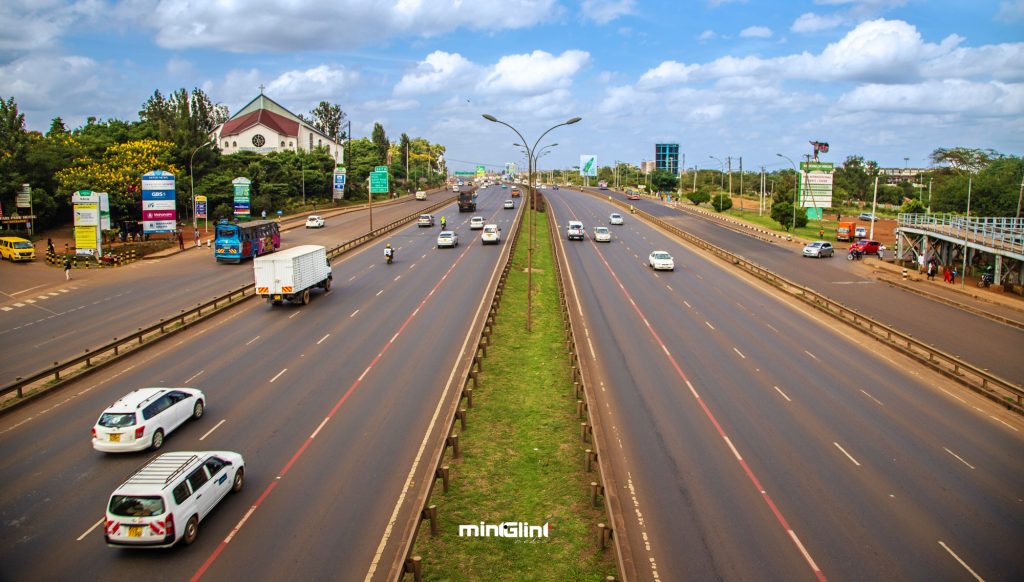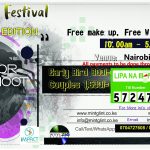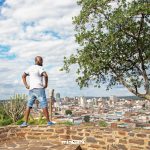Photography is mostly an interactive activity, this means doing it while social distancing is a tall order. However, there are some ways in which you can still enjoy doing it under these difficult times.
The two major cities in Kenya i.e. Nairobi and Mombasa are under restricted movement in and out while the whole country is under a dawn to dusk curfew, people have been asked to stay indoors and only leave their houses when it’s necessary. The good thing is unlike other places around the world we are not under a total lockdown meaning we can still move around as long as we keep our facemasks on and practice social distancing.
As a photographer especially if your speciality is photographing humans and social events this is quite a frustrating time, both financially and not being able to enjoy your passion. Whilst you may not do much about the financial bit depending with your business model, there so much you can explore on the passion side of your photography
Parks & Nature trails
Parks, forests and nature trails offer the best sceneries that can attract and capture the imagination of any photographer. From whistling leaves, springs, waterfalls, meandering paths etc. All these in isolation or in a composition can be instrumental portraits and landscapes shots. And if you can add a human element in them, they become more interesting and relatable.
You can also use your closest-focusing lens or a dedicated macro lens if you have one, and look for flowers, and try to capture some beautiful colours, textures, and even more abstract flora shots. I recommend doing macro photography on cloudy days because the diffused light will help bring out flower colours. I also recommend getting down low, on a level with your subject, so you can portray the world from a more intimate perspective. By the way, if you don’t have any flowers, that’s okay! You can still photograph plants, trees, buds, or even weeds. The beauty of macro photography is that there are subjects everywhere.
If you are in Nairobi the have a look at the following suggestion of parks, forests and nature trails that easily accessible and would offer exciting sceneries for a photographer.
- Nairobi Arboretum
- Ngong Hills
- Karura Forest
- Oloolua Nature Trail
- Uhuru Gardens Memorial Park
- Nairobi National Park
- Giraffe Centre Nature Trail
- Nairobi Safari Walk
- Paradise Lost, Kiambu
- Achis Ranch Karen Nairobi
For obvious reasons its recommended you venture out at the golden hour i.e at sunrise or sunset when the light is warm, soft and golden. That way, you get to capture artistic skylines and horizons. You could blend them gorgeously with your subjects (people or objects) for astounding photos.
Roads, Buildings and Human Activities.
Sometimes you don’t even need to venture far from your house if you have a good eye theirs so much within the neighbourhood that can help you compose beautiful shots. However, beware of privacy concerns when photographing people and buildings.
For instance, if you live near a highway you could locate the nearest footbridge or flyover and perch at a vintage position from where you can capture epic landscapes and or amazing time-lapse videos. You could also just go for a walk around your neighbourhood! Take photos of trees whistling to the cool breeze, of flowers waving in the sunlight. The opportunities are endless. The key is to be open to more unusual subjects and to spontaneously capture something different. For instance, I am a wedding and events photographer, most often than not I capture people but the prevailing circumstance has forced me to explore more in nature and inanimate objects photography.
I would recommend using a lens with a good zoom e.g a 70-200mm telephoto particular subjects but ensure you have something wider like a 24-105mm for the landscapes; that way, you are not limited and you can avoid approaching the subject and keep the social distance.

Spend time creating a studio in your home
If you have always wanted to create a photography studio in your home this is the moment. It does have to be expensive; a spacious room that is preferably well lit with plain walls. When using natural light, you should simply position your studio near a window, ideally with the window light coming from slightly in front of your setup, so you have light falling on your subject from the front and side.
At least one source of light i.e speed light or strobe light. If you don’t have backdrops a plain fabric would work.
With this setup you can achieve a lot just like what you would do in a proper studio. Imagine what you could do with a studio after the Corona pandemic and all the social distancing is over.
You could do;
- portrait photoshoots.
- pet photoshoots.
- still life setups.
- Product photography
- Food photography.
If you have enough capital expenditure the probably could consider a modest studio with the following;
First, some sort of backdrop. A black tablecloth will work just fine for many purposes, but you can also use a large, white slab of cardboard, a proper photography backdrop (these can be purchased), or even an interesting wall.
Investing in good artificial light, you can invest in at least three strobe lights or speed lights to want several speed lights at the very least. These speed lights or strobe lights will need to be triggered simultaneously so that is something you will need to consider. Additionally, they will need to be held up with light stands.
You will also need to invest in light modifiers. Here you have an option of; umbrellas, softboxes, diffusers, snoots, and more. Don’t sweat it out, keep it simple by investing in what you really need and understand how to use
Finally, you need some racks or plain boxes this are handy for people to pose with, seat on and even more importantly if you will be doing product or still life photography.
And, by the way:You can also do still life photography using objects you find in your home. Objects such as bowls, plates, silverware, vases, jugs, antiques, and much more. So don’t feel like you have to go out into the world to get subjects. Some of the best subjects are right in the house with you!

Get to know your camera while stuck inside
It’s a fact that Cameras are complicated. And if you can master just 60% of the abilities and attributes of your camera then you are an excellent photographer or videographer.
This simply means that there are things you may not know about your camera but are important in your work and knowing them will make a huge difference in your photography work. So, utilize the free time to explore your camera and learn all you can about it. Start with all the external buttons. Do you know what they can all do? Then dig into the menu items. Scan over every single option. And as soon as you hit something you’re not sure about, or you’re not completely familiar with check the manual, Youtube and Google you may also ask your peers who are more experienced. If you discover and get to learn an essential feature, take note and ensure that you practically try it out till you master it.
For your information every camera make and model are different, so if you have multiple cameras, I recommend you follow this tip for every one of them.
Post-production Processing
One of the most enjoyable yet tedious aspects of photography is sitting down at the end of the day to choose your best photos. The simple selection of your favourite photos isn’t the end of the story though, there is still post processing to be done!
Every photo can benefit from extra work in your favourite editing suite be it Lightroom or Photoshop, even if that’s just some basic enhancements. Here are some of the most commonly used software programs for editing photos;
Lightroom
Lightroom is the most commonly used software for post-processing images by photographers. Its a more user-friendly tool compared to Photoshop,
Photoshop
This is the most complete and powerful photo editing and manipulation software. You can literally take your photos to the next level by learning the potential of this program.
iPhoto/Photos
This comes standard with all Apple computers. The older version is iPhoto, which has now been superseded by Photos. This will allow you to cover all the basics like blemish removal, contrast, saturation and horizon line correction.
Luminar
This was made in response, and as an alternative, to Photoshop. It’s an Apple for Mac OS software, so those with a Mac who want something with a bit more punch can look to Luminar. Although we still have photoshop for Mac OS
Post processing sometimes is inevitable, it may be something as basic as just straitening or cropping an image for proper framing to something as more complex and correcting the saturation of colours, better contrasting and sharpening. These are skills that are learned from experience and through the dedication of time to understand what software you are using and what it can do for you.
And what a better time to polish or learn this skill than during this lockdown period when you have more time in your hands.
Hopefully, these tips will help you continue to improve your photography and keep it alive while social distancing.
Good luck lets combat Coronavirus. Wash your hands, Sanitize, stay at home when you can, keep social distance and stay safe! And please remember to share article, comment and subscribe.



